Check out the little plane we that took to Ny Alesund. Every seat is a window seat!
 The small plane we took from Longyearbyen to Ny Alesund
The small plane we took from Longyearbyen to Ny Alesund
 The cockpit from my seat
The cockpit from my seat
This is one of my first looks at Kongfjorden- the fjord that Ny Alesund sits on. The white dots are icebergs!
 My first view of Ny Alesund form the air
My first view of Ny Alesund form the air
Once on the ground we were shuttled a very short distance to "town".
 The REU group on the tarmac after arrival
Arrived in Ny Alesund!
The REU group on the tarmac after arrival
Arrived in Ny Alesund!
The views were so spectacular. It is better than I ever imagined and the most beautiful place I have ever seen. I can't even begin to describe how picturesque it is here.
We settled into our rooms and headed to the dining hall. I took this picture from my seat at lunch.
 I took this picture from the dining hall during lunch
I took this picture from the dining hall during lunch
The dining hall bustled with scientists from all over the world. At this point I was restraining myself from doing the biggest happy dance you have ever seen. I was just like, "Yes!!! I am here and this place is amazing!" Truly I just thought I was going to explode with joy. I am so fortunate to have this opportunity. Really, how many teachers get out of their classroom to do something like this? I am pinching myself 24/7. I am very, very lucky indeed. Wahoo!!!!
Settling In To Do Some ScienceTogether we made several stops around "town". (For a sense of scale, the town is about the size of a high school campus.) First, we had a brief about procedures, rules, contacts, etc. Next, we took a look at facilities and choices for our lab. After a tour, we decided to set up camp inside the Marinlaboratorium because it is right next to the docks and we won't have to carry our equipment far.
 The REU group checking out the lab space
The REU group checking out the lab space
We located our equipment which had been shipped ahead, moved it to our new lab space and unpacked it.
 Hauling out the equipment
Hauling out the equipment
 Loading up the equipment
Loading up the equipment
 The marine lab- this is where the science will happen.
The marine lab- this is where the science will happen.
We also visited the dock.
 This is the boat I will drive, or one like it.
Getting to Work
This is the boat I will drive, or one like it.
Getting to Work
After dinner we got started on prepping the equipment.
 Unpacking the crates
Unpacking the crates
 Carefully removing the CTD. A CTD measures the conductivity (salinity), temperature and depth of a water column.
Carefully removing the CTD. A CTD measures the conductivity (salinity), temperature and depth of a water column.
 This is another water sampler and can collect water for a variety of tests.
This is another water sampler and can collect water for a variety of tests.
 Julie is demonstrating how the gravity corer will function.
Julie is demonstrating how the gravity corer will function.
 Julie is demonstrating operation of the winch
Julie is demonstrating operation of the winch
 Ryan is checking operation of the GPS units
Ryan is checking operation of the GPS units
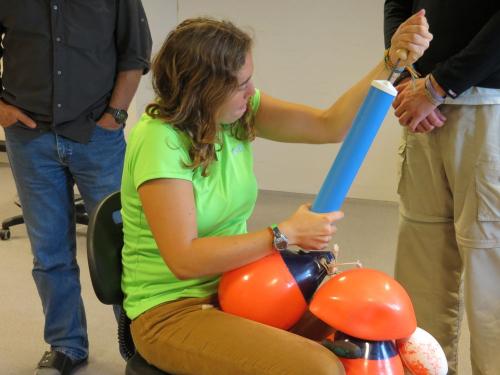 Courtney is pumping up the buoys that will float atop the drogues
Courtney is pumping up the buoys that will float atop the drogues
 Ryan and Kean are massing and labeling petri dishes and filters in preparation for sediment sampling
Ryan and Kean are massing and labeling petri dishes and filters in preparation for sediment sampling
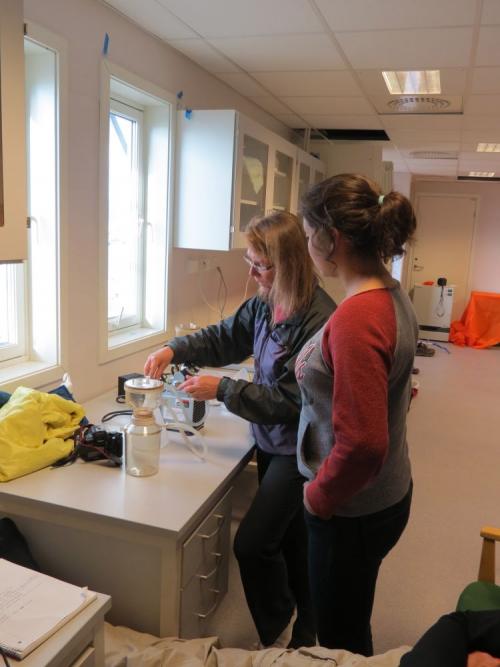 Jessica is checking out the filter which will be used to prepare samples
Jessica is checking out the filter which will be used to prepare samples
 Ross and Dominique are downloading the software for the CTD
Ross and Dominique are downloading the software for the CTD
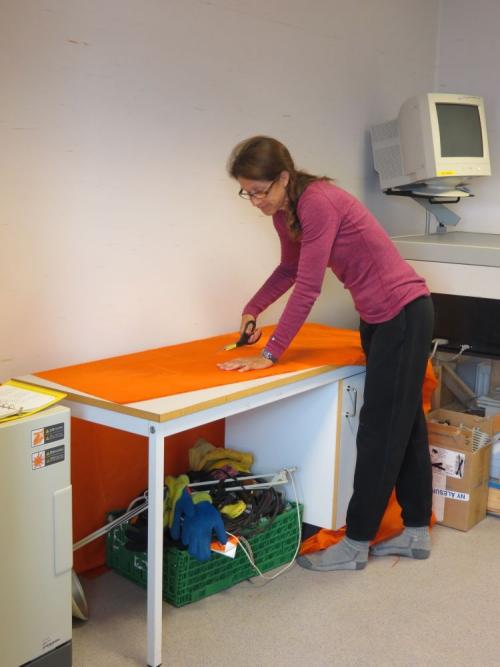 And I am cutting panels that I will sew and attach to PVC pipe to make the drogue!
Did I Mention That This Place Is Awesome?
And I am cutting panels that I will sew and attach to PVC pipe to make the drogue!
Did I Mention That This Place Is Awesome?
Here are some more pictures to illustrate our incredible, wonderful, beautiful, amazing day.
 A beautiful rainbow formed across the fjord while we were at the marine lab.
A beautiful rainbow formed across the fjord while we were at the marine lab.
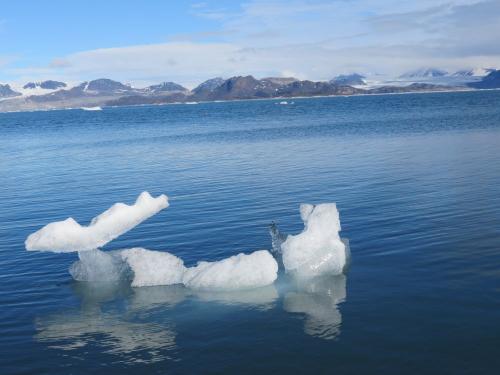 Icebergs are beautiful
Icebergs are beautiful
 View from the shore of the fjord
View from the shore of the fjord
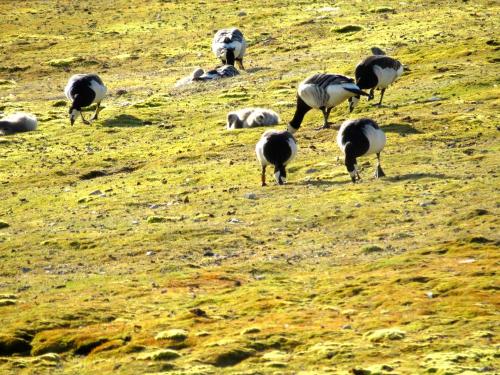 There are many geese. Much of the station is designated as bird sanctuary.
There are many geese. Much of the station is designated as bird sanctuary.
 The REU group heading back from the lab
The REU group heading back from the lab

Comments